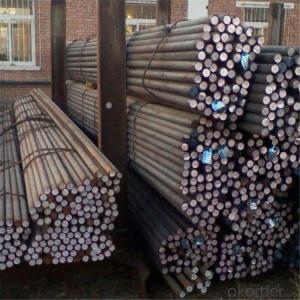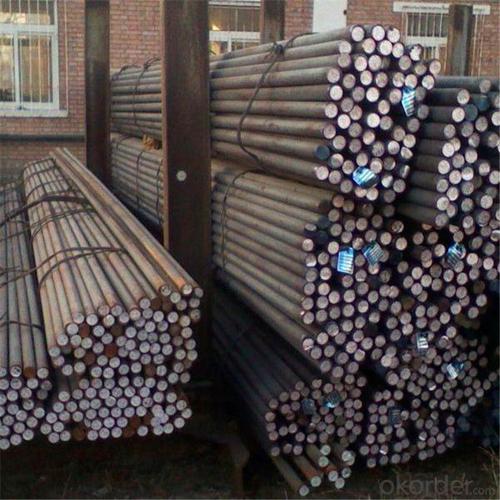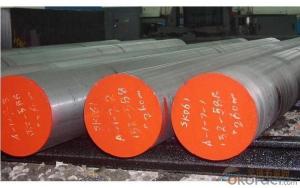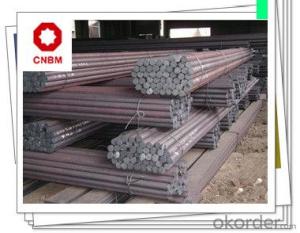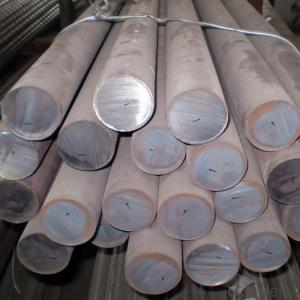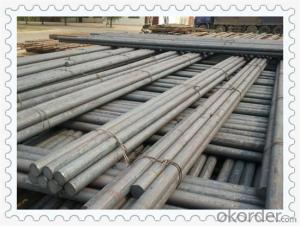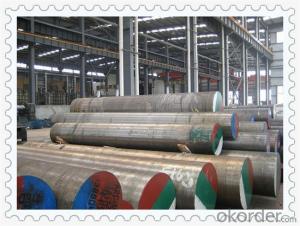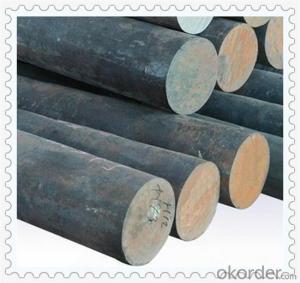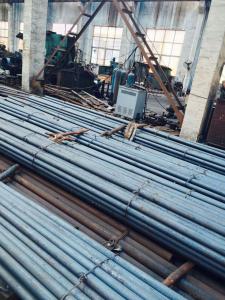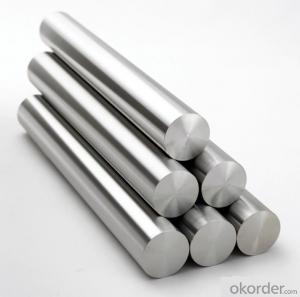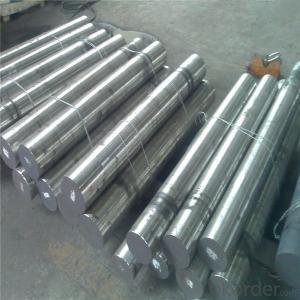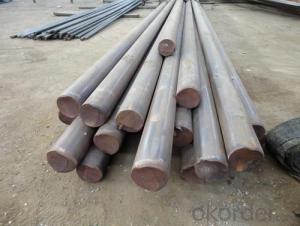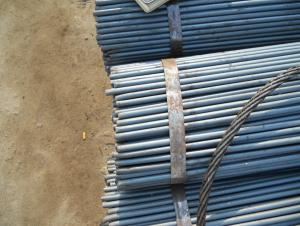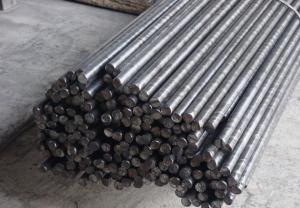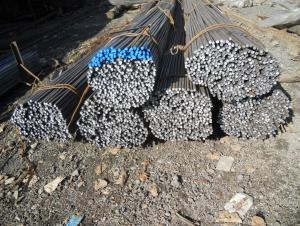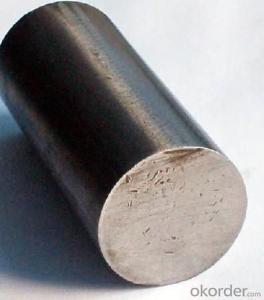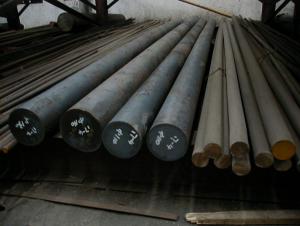SAE1045 C45 Cold Drawn Steel Round Bar
- Loading Port:
- Tianjin
- Payment Terms:
- TT OR LC
- Min Order Qty:
- 100 m.t.
- Supply Capability:
- 50000 m.t./month
OKorder Service Pledge
OKorder Financial Service
You Might Also Like
Specification
SAE1045 C45 Cold Drawn Steel Round Bar
Product Description of SAE1045 C45 Cold Drawn Steel Round Bar
1. Steel grade: SAE1045, 45#, C45, S45C
2. Length: 6M-12M
3. Diameter: 16mm-300mm
4. Product range: round bar, flat bar, square bar
5. Technique: Hot rolled, forged, cold drawn
Specification of SAE1045 C45 Cold Drawn Steel Round Bar
Material | SAE1045 | Round bar | Dia(mm) | 16-300mm |
Process | EAF + LF + VD + Forged + Heat Treatment (optional) | Length (mm) | Max 12m | |
Heat treatment | Normalized / Annealed / Quenched / tempered | Flat bar | Thickness(mm) | 8-500mm |
Delivery condition | Hot forged +Rough machined (black surface after Q/T)+ Turned (optional) | Width(mm) | 70-200mm | |
Test | Ultrasonic test according to SEP 1921-84 D/d | Length (mm) | Max 12m |
Chemical Composition of SAE1045 C45 Cold Drawn Steel Round Bar
C | Si | Mn | Cr | Ni | Cu |
0.42~0.47 | 0.17~0.37 | 0.35~0.65 | ≤0.25 | ≤0.30 | ≤0.25 |
Photo Show of SAE1045 C45 Cold Drawn Steel Round Bar
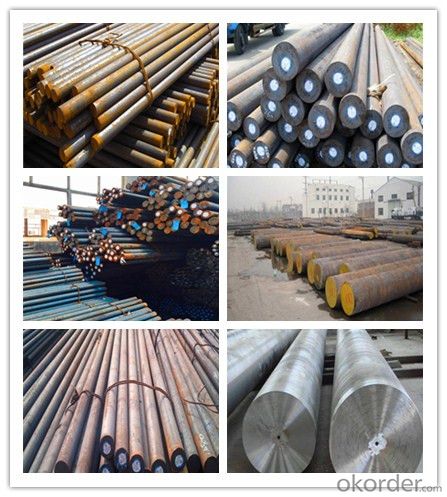
Packing and Delivery:
Packing in bundle package, or as customer's requirements.
Delivery Detail: 45 days after receiving the deposit.
Usage and Applications of SAE1045 C45 Cold Drawn Steel Round Bar
1. Steel round bar is used in a large number of architectural and engineering structures. Or it can be used in construction of plants for the production of steel house frames, high-voltage transmission towers, bridges, vehicles, boilers, containers, ships, etc.
2. And we can use this kind of product on the performance of the mechanical parts if the demand is not very high.
3. Some special material steel round bar can be used for main shaft of steamer, hummer shank, with big section and supper force.
Company Information
CNBM International Corporation is the most important trading platform of CNBM group.
Whith its advantages, CNBM International are mainly concentrate on Cement, Glass, Iron and Steel, Ceramics industries and devotes herself for supplying high qulity series of refractories as well as technical consultancies and logistics solutions.

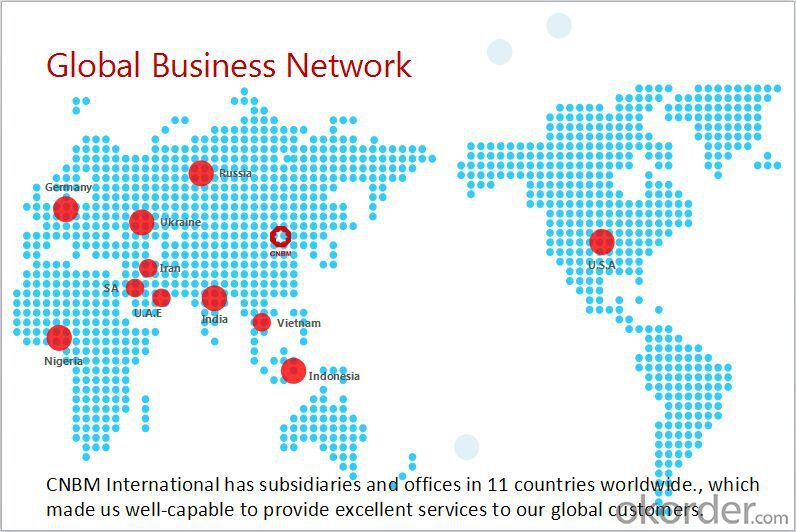
F A Q
1, Your advantages?
professional products inquiry, products knowledge train (for agents), smooth goods delivery, excellent customer solution proposale
2, Test & Certificate?
SGS test is available, customer inspection before shipping is welcome, third party inspection is no problem
3, Factory or Trading Company?
CNBM is a trading company but we have so many protocol factories and CNBM works as a trading department of these factories. Also CNBM is the holding company of many factories.
4, Payment Terms?
30% TT as deposit and 70% before delivery.
Irrevocable L/C at sight.
5, Trading Terms?
EXW, FOB, CIF, FFR, CNF
6, After-sale Service?
CNBM provides the services and support you need for every step of our cooperation. We're the business partner you can trust.
For any problem, please kindly contact us at any your convenient time.
We'll reply you in our first priority within 24 hours.
- Q: What are the safety precautions to be taken while handling steel round bars?
- When handling steel round bars, it is important to follow certain safety precautions to prevent accidents and injuries. Here are some safety measures to be taken: 1. Personal Protective Equipment (PPE): Always wear appropriate PPE, such as safety goggles, gloves, and steel-toe boots, to protect yourself from potential hazards like flying debris, sharp edges, and crushing injuries. 2. Lifting Techniques: Use proper lifting techniques, such as bending your knees and using your leg muscles instead of your back, to avoid strain or back injuries. Do not attempt to lift heavy steel round bars alone; seek assistance or use lifting equipment like cranes or forklifts. 3. Secure Storage: Store steel round bars in a designated area or rack that is stable and secure. Ensure that they are properly stacked and organized to prevent them from falling or rolling onto someone. 4. Handling Tools: Use appropriate tools, such as tongs or lifting hooks, to handle steel round bars. Avoid using your hands or fingers directly to prevent cuts or pinching injuries. 5. Inspection: Before handling steel round bars, inspect them for any defects, sharp edges, or protrusions that may pose a safety risk. If any issues are found, report them to the appropriate personnel and do not use the bars until they are repaired or replaced. 6. Communication: Maintain clear communication with co-workers when handling steel round bars, especially in situations where multiple people are involved. Use hand signals or verbal cues to coordinate movements and avoid accidental collisions. 7. Proper Storage and Transportation: When storing or transporting steel round bars, ensure they are properly secured and adequately supported to prevent shifting, sliding, or falling during movement. 8. Training: Provide appropriate training to all personnel involved in handling steel round bars. This should include proper lifting techniques, the use of PPE, and awareness of potential hazards and safety procedures. By following these safety precautions, you can minimize the risk of accidents and injuries while handling steel round bars. Always prioritize safety to create a secure working environment for yourself and those around you.
- Q: How do you calculate the strength of a steel round bar?
- The strength of a steel round bar is typically calculated using the formula for tensile strength, which is the maximum amount of tensile stress that a material can withstand before breaking. This is determined by dividing the maximum load applied to the bar during a tensile test by its cross-sectional area.
- Q: What is the difference between a turned and a ground steel round bar?
- A turned steel round bar is a cylindrical steel rod that has been machined using a lathe to achieve a smooth and precise finish. This process removes material from the surface of the bar, resulting in a dimensional accuracy and a polished appearance. On the other hand, a ground steel round bar is also a cylindrical steel rod, but it undergoes a different machining process called grinding. Grinding involves using an abrasive wheel or belt to remove material from the bar's surface, resulting in a more precise diameter and a smoother finish compared to turning. In summary, the main difference between turned and ground steel round bars lies in the machining process used. Turning removes material through a lathe, while grinding involves an abrasive process for a more accurate and polished result.
- Q: Can steel round bars be used in the manufacturing of marine propellers?
- Yes, steel round bars can be used in the manufacturing of marine propellers. Steel is a commonly used material for propellers due to its high strength, durability, and resistance to corrosion in marine environments. By using steel round bars, manufacturers can easily shape and form the propeller blades, ensuring optimal performance and longevity in marine applications.
- Q: What is the maximum hardness achievable for steel round bars?
- The maximum hardness attainable for steel round bars relies on various factors, including the steel's composition, the heat treatment process, and the desired properties for the specific application. Typically, steel can reach a maximum hardness of approximately 65 HRC or higher. This level of hardness is commonly achieved through procedures like quenching and tempering. Quenching entails rapidly cooling the steel from a high temperature to room temperature, resulting in a hardened structure. Subsequently, tempering is carried out to decrease brittleness and enhance the steel's toughness while maintaining a high level of hardness. It is crucial to acknowledge that pushing the hardness of steel beyond a certain point may result in reduced toughness and increased brittleness. Hence, the maximum attainable hardness must be balanced with the desired properties for the particular application, such as strength, ductility, and resistance to wear or impact.
- Q: How are steel round bars classified based on their shape?
- Steel round bars can be categorized into two main groups, namely hot-rolled round bars and cold-drawn round bars, depending on their shape. Hot-rolled round bars are produced by heating a steel billet until it becomes malleable and then passing it through a series of rollers to achieve the desired shape. This manufacturing process results in a rougher surface texture and a slightly larger diameter when compared to cold-drawn round bars. Hot-rolled round bars find common usage in construction, engineering, and manufacturing applications where strength and durability play a crucial role. On the other hand, cold-drawn round bars are manufactured by pulling a hot-rolled round bar through a series of dies at room temperature. This process enhances the dimensional accuracy, surface finish, and mechanical properties of the steel. Cold-drawn round bars possess a smoother surface texture and a more precise diameter, making them suitable for applications that demand tight tolerances, such as precision machining, automotive components, and machinery shafts. In conclusion, the classification of steel round bars, based on their shape, is determined by the specific manufacturing process employed. Hot-rolled round bars exhibit rougher surfaces and slightly larger diameters, while cold-drawn round bars boast smoother surfaces and more precise dimensions. The choice between these two categories depends on the specific requirements of the given application.
- Q: How do steel round bars compare to concrete round bars?
- There are several notable distinctions between steel round bars and concrete round bars. To begin with, steel round bars are composed of a robust and long-lasting material, while concrete round bars are made from a composite material containing cement, aggregates, and water. This dissimilarity in materials grants steel round bars a higher tensile strength and resistance to bending and deformation in contrast to concrete round bars, which are more susceptible to cracking and breaking under stress. Additionally, steel round bars provide greater flexibility in terms of design and customization. They can be easily molded, bent, and trimmed to specific lengths and dimensions, making them highly versatile for various applications. Conversely, concrete round bars are typically available in standard sizes and shapes, thereby limiting their design possibilities. Another crucial aspect to consider is weight. Steel round bars generally have a lighter weight compared to concrete round bars, rendering them easier to handle and transport. This weight advantage also results in reduced structural loads, allowing for more efficient and cost-effective construction. In regard to corrosion resistance, steel round bars necessitate additional protective measures such as coatings or galvanization to prevent rust and corrosion, particularly in humid or marine environments. Conversely, concrete round bars possess natural resistance to corrosion. This factor can significantly influence the long-term durability and maintenance requirements of a structure. Lastly, cost is a pivotal factor to take into account. Although steel round bars may entail a higher initial material cost compared to concrete round bars, their superior strength and durability can result in long-term cost savings. Concrete round bars may require more frequent maintenance and repairs, which can accumulate over time. In conclusion, steel round bars offer superior strength, flexibility, and durability in comparison to concrete round bars. However, the choice between the two is contingent upon the specific requirements of the project, including factors such as design flexibility, weight considerations, corrosion resistance, and cost.
- Q: How are steel round bars used in the manufacturing of agricultural machinery?
- Steel round bars are commonly used in the manufacturing of agricultural machinery as they provide strength, durability, and flexibility. These bars are often used to construct various components such as axles, shafts, and pins, which play a crucial role in supporting and transmitting power within the machinery. The high tensile strength of steel round bars allows them to handle heavy loads and withstand harsh operating conditions, ensuring the reliability and longevity of the agricultural equipment.
- Q: Are steel round bars available in different shapes?
- No, steel round bars are typically only available in a cylindrical or circular shape. The term "round bar" refers specifically to the shape of the steel, which is typically a solid cylindrical piece. However, there are other types of steel bars available in different shapes, such as square bars, flat bars, or hexagonal bars, which offer different properties and uses.
- Q: What is the maximum molybdenum content allowed for steel round bars?
- The maximum molybdenum content allowed for steel round bars varies depending on the grade and specific requirements of the steel. Generally, the maximum molybdenum content for standard carbon and alloy steels is around 0.25-0.30%. However, for high-performance steels such as tool steels or stainless steels, the maximum molybdenum content can be higher, ranging from 1-10%, depending on the specific grade and application. It is crucial to consult the relevant industry standards, specifications, or material data sheets to determine the precise maximum molybdenum content allowed for a specific steel round bar.
Send your message to us
SAE1045 C45 Cold Drawn Steel Round Bar
- Loading Port:
- Tianjin
- Payment Terms:
- TT OR LC
- Min Order Qty:
- 100 m.t.
- Supply Capability:
- 50000 m.t./month
OKorder Service Pledge
OKorder Financial Service
Similar products
Hot products
Hot Searches
Related keywords
